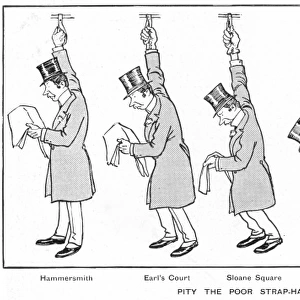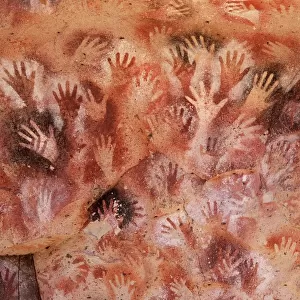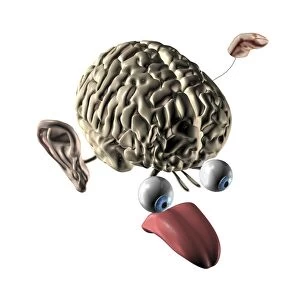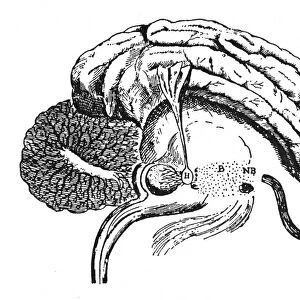Home > Science Photo Library > History
Andreas Vesalius, Dutch anatomist
![]()

Wall Art and Photo Gifts from Science Photo Library
Andreas Vesalius, Dutch anatomist
Andreas Vesalius (1514-1564), Dutch anatomist. Vesalius was born at Brussels into a family of physicians. After early education in Brussels he studied at the universities at Louvain and Paris. His doctorate was gained at Padua, and on graduation he was immediately offered the chair of anatomy and surgery. He taught by demonstrating dissection on corpses, rather than simply reading the classical writings of Galen. When Vesalius discovered Galen had used apes instead of humans for dissection, he set about correcting Galens works. Vesalius completely overturned the wisdom of the day, creating the first reasonably accurate description of human anatomy based on his own observations. These were published in De humani corporis fabrica in 1543, one of the greatest books in history. This woodcut comes from van Opmeers Opus chronologium orbis universi published at Antwerp in 1611
Science Photo Library features Science and Medical images including photos and illustrations
Media ID 6296543
© MIDDLE TEMPLE LIBRARY/SCIENCE PHOTO LIBRARY
1500s 16th Century Andreas Vesalius Demonstration Dissection Galen Lecturer Observation Physician Teacher Teaching Vertical De Humani Corporis Fabrica Empiricism Mono Chrome
EDITORS COMMENTS
This print showcases the renowned Andreas Vesalius, a Dutch anatomist whose groundbreaking contributions revolutionized the field of medicine. Born into a family of physicians in Brussels, Vesalius embarked on an educational journey that took him to prestigious universities in Louvain, Paris, and Padua. It was during his time at Padua that Vesalius made a remarkable discovery – he found out that the ancient physician Galen had based his anatomical knowledge on dissecting apes rather than humans. Determined to correct this misconception, Vesalius dedicated himself to meticulously observing and documenting human anatomy through dissection. His tireless efforts culminated in the publication of De humani corporis fabrica in 1543, which remains one of history's greatest books. This monumental work provided an accurate description of human anatomy derived from Vesalius' own observations and marked a significant departure from traditional teachings rooted solely in classical writings. In this evocative woodcut taken from van Opmeers Opus chronologium orbis universi published in 1611, we see Vesalius passionately engaging with students as he imparts his knowledge through demonstration and observation. His role as both lecturer and physician is evident as he shares his groundbreaking insights into the intricacies of the human body. This image captures not only an important moment in medical history but also highlights Vesalius' commitment to empirical study and teaching. It serves as a powerful reminder of how one individual's dedication can reshape our understanding of science and pave the way for future advancements.
MADE IN THE UK
Safe Shipping with 30 Day Money Back Guarantee
FREE PERSONALISATION*
We are proud to offer a range of customisation features including Personalised Captions, Color Filters and Picture Zoom Tools
FREE COLORIZATION SERVICE
You can choose advanced AI Colorization for this picture at no extra charge!
SECURE PAYMENTS
We happily accept a wide range of payment options so you can pay for the things you need in the way that is most convenient for you
* Options may vary by product and licensing agreement. Zoomed Pictures can be adjusted in the Basket.













